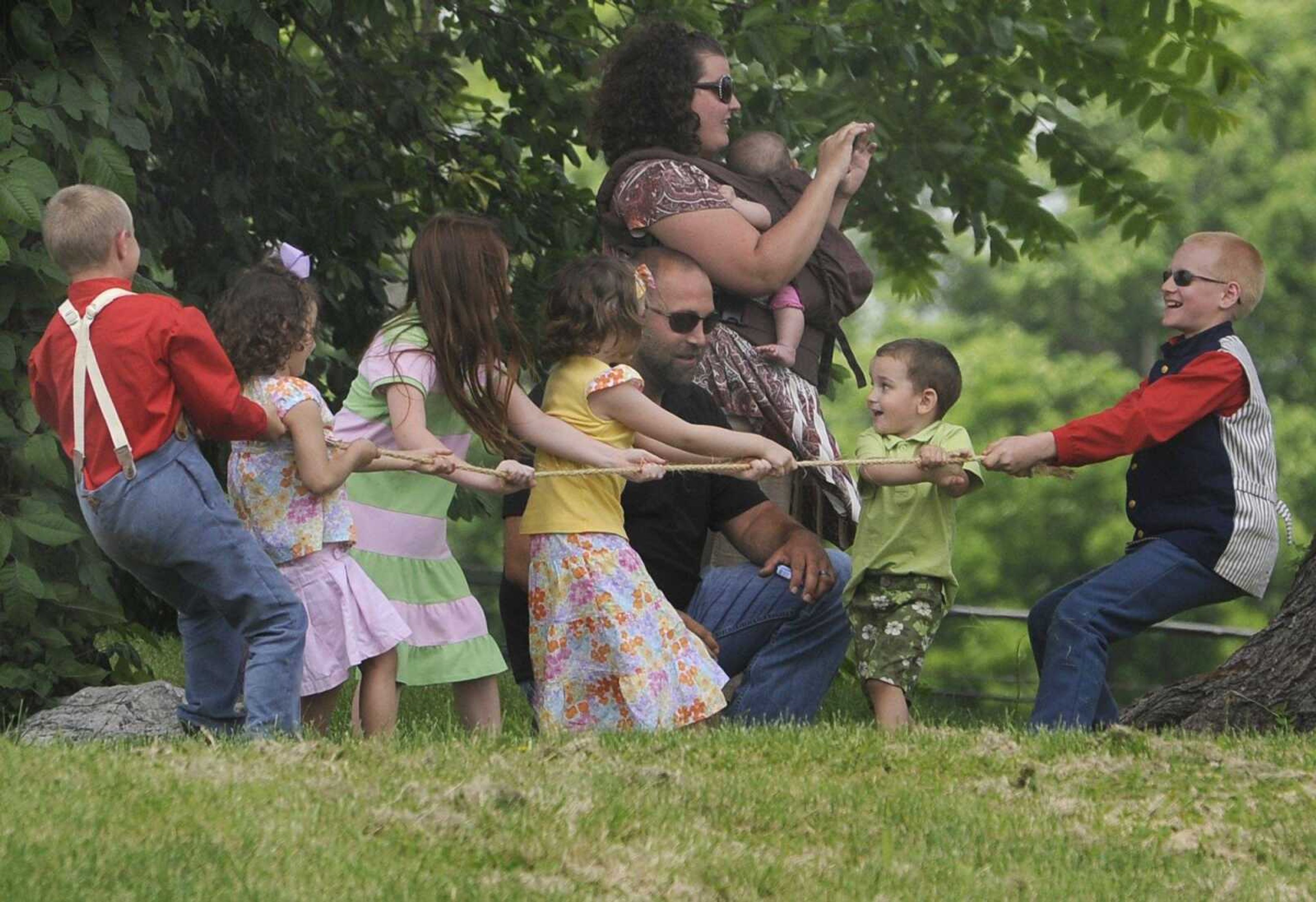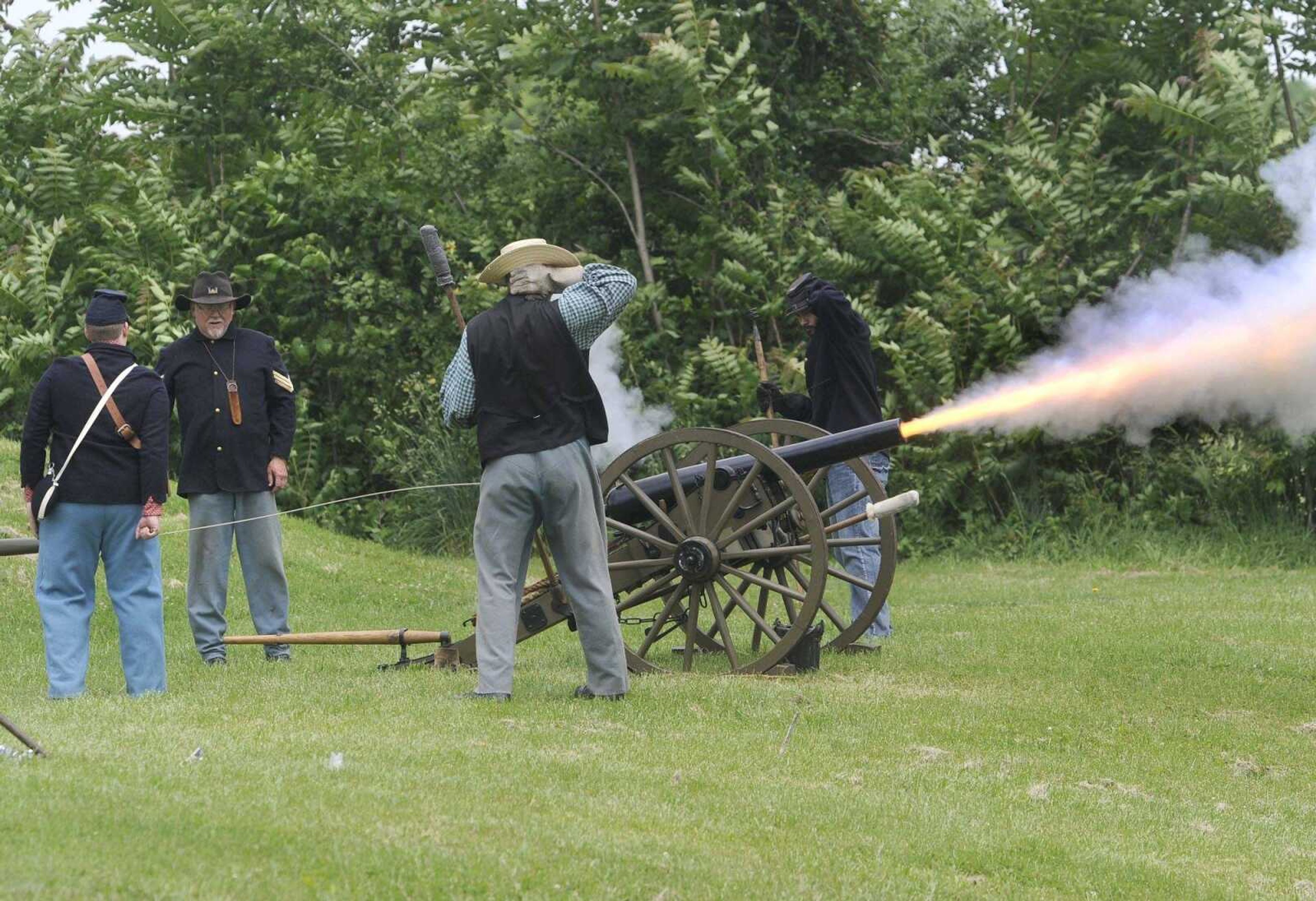Visitors get a bang out of Fort D Days
Not everyone can shoot a cannon from 1861. First, you have to take the safety class. As Capt. Randy Baehr and his camp of Union soldiers demonstrated the proper way to fire the cannon at the annual Fort D Days in Cape Girardeau, bystanders waited for the resounding "boom" to echo across the open field on the south side of Cape Girardeau...
Not everyone can shoot a cannon from 1861.
First, you have to take the safety class.
As Capt. Randy Baehr and his camp of Union soldiers demonstrated the proper way to fire the cannon at the annual Fort D Days in Cape Girardeau, bystanders waited for the resounding "boom" to echo across the open field on the south side of Cape Girardeau.
Four men worked on each of the two cannons -- prepping, loading and, after the proper signals were displayed, firing the cannon -- resulting in more then one person jumping from the sound. Within three minutes, the cannon was loaded and fired for a second time.
Gun demonstrations, showing tools commonly used in the Civil War, the way the soldiers dressed and the way they lived could be found at Fort D over the weekend, with re-enactors from The Turner Brigade who were happy to explain the reasoning behind their 19th-century lifestyle.

Pyrotechnics are how Bob Aubuchon first got involved in re-enacting.
"I actually got started in pyrotechnics blowing up Fort Davidson," he said. "I joined the Sons of the Union Veterans, and with that group we do ceremonies, gravesite ceremonies, memorials, plaque dedications -- a living history, basically, teaching people. The group I belong with is Ulysses S. Grant Camp 68. I'm the camp commander."
During the weekend's demonstration, the cannons were not loaded with projectiles, but they put on a good show.
When asked why the cannons weren't loaded, Baehr replied: "Because, we're not really trying to kill the Confederates."
The guns were loaded with gunpowder and aluminum foil to complete the demonstrations.
Baehr estimated with a cannon the size of his, it would shoot about a mile, and the hardest part of operating a cannon during a battle was re-aiming it.
"When you fire a cannonball out of a cannon, it rolls back," he said. "The bigger the gun, the further it is going to roll. We observed a 12-pounder bronze smooth-board gun firing live ammunition, and that gun weighs about 3,000 pounds with about two pounds of powder ... and it rolled back about six feet. That's a lot of mass moving that you don't want to be in the way of."
Baehr also said the typical range of a Civil War field piece was between 1,600 and 2,200 yards, depending on the type.
Owning your own cannon isn't an impulse buy. Baehr's collection of Civil War relics has taken him nearly 23 years to accumulate.
"My son suckered me into it 27 years ago, but we've only been actively participating for 23. He was 7 at the time. He and his brother liked trains, and my wife saw that they had the steam train over in Jackson and said, 'Oh, there's going to be some soldiers down there -- they'll like that.' We went in September, and it was hot. We were in a field with no trees, watching the re-enactment, and my son gets home and says, 'I know what I want to be for Halloween; make me a uniform,'" Baehr said.
Despite his less-than-thrilled recollection of how he began re-enacting, Baehr has since traveled all over the country performing living histories and re-enactments and has been coming back to Fort D for several years.
The first fact the re-enactors usually share with their visitors is Fort D never saw combat after its construction in 1861. It housed 24- and 32-pounder cannons, but the fort mainly was used for training.
The battle of Cape Girardeau on April 26, 1863, actually took place along Caruthers Avenue, near Southeast Hospital.
More information on Cape Girardeau's history in the Civil War, pamphlets and a driving tour map are available at the Fort D historic site.
smaue@semissourian.com
388-3644
Pertinent address:
920 Fort St., Cape Girardeau
Connect with the Southeast Missourian Newsroom:
For corrections to this story or other insights for the editor, click here. To submit a letter to the editor, click here. To learn about the Southeast Missourian’s AI Policy, click here.









